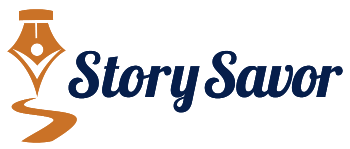Self-Publishing on Amazon
Self publishing on Amazon is an easy and cost-effective way for an author to independently publish and distribute their own book. This is done through Amazon’s Kindle Direct Publishing (KDP) platform, which allows authors to upload their own manuscripts or cover art, and then make the book available for purchase in the company’s Kindle Store. With KDP, authors can set their own pricing, receive up to 70% of royalties from their sales, and access a variety of promotional tools designed to help expose their work to the widest possible audience.
It is important to note that Amazon requires a one-time setup fee, as well as additional fees for certain services, so authors should be sure to read the fine print before getting started. All in all, however, self publishing on Amazon can be an effective and low-cost way of getting one’s work in the hands of those who may not ordinarily read it. In this article we’ll discuss when you should self publish and how to self publish on Amazon.
Kindle Direct Publishing Versus Self Publishing on Amazon
As a book publishing professional, the difference between Kindle Direct Publishing and Amazon Publishing can be likened to the difference between self-publishing versus traditional publishing.
With Kindle Direct Publishing, authors have the freedom to self-publish their work and keep control over the rights to their book. It’s free to publish using KDP, and authors can select the marketplaces they want to publish their book in, set their own retail price and royalty, manage their own content and marketing of their book, and even maintain ownership of the copyright. This is great for authors who want to have control over their book and don’t mind investing their own time and energy in its publication.
On the other hand, Amazon Publishing offers traditional publishing services to authors and is more suited for authors who are looking for more of a hands-off approach. Amazon Publishing deals with rights, costs, distribution, marketing, and will provide a higher degree of author royalties. This option is great for authors who don’t have the time or experience to manage the self-publishing process without professional assistance.
When choosing how to publish an autobiography, it’s important to consider both options and decide which route is best for you. It’s not a foregone conclusion that you should self publish on Amazon – you should consider all the options available to you, including more traditional publication models.
What Are the Challenges of The Traditional Book Publishing Process?
First and foremost, one of the biggest problems with the traditional book publishing model is that it is highly competitive and can be difficult to get noticed. Big publishing houses receive thousands of book proposals each year, and it can be difficult for your book to rise to the top of the pile. Additionally, the publishing process can be long and it can take months (or even years) from the time you submit your proposal until your book is published.
The next challenge with the traditional book publishing model is that authors tend to have less control over their work. In traditional publishing, the publisher will often make decisions about editing, marketing, cover designs, and other aspects of the book. This can be frustrating for authors who prefer to have more autonomy.
Finally, and maybe most importantly, traditional book publishing often comes with unfavorable financial terms. Most publishers will offer authors a small advance and a relatively small portion of royalties on each sale. This can make it difficult for authors to make a living and create a sustainable long-term income from their books.
That being said, the traditional book publishing model is still a viable option for authors who are looking to get their work out into the world. With proper research, patience, and hard work, it is possible to find a good publishing home and create a successful and lucrative book.
How Do You Decide How to Self Publish a Book on Amazon versus Publish via the Traditional Method?
There are pros and cons to each publishing avenue, and the decision on how to self publish on Amazon or to pursue a traditional publisher should be based on a variety of factors. Amazon self published books can offer an ideal solution for authors who wish to have total control over their work and who want a quick turnaround for their book without a long and often complex publishing process.
Self-publishing with Amazon KDP can also provide flexible royalties, allowing authors to keep a greater portion of the revenues from book sales. Additionally, books self-published with Amazon KDP can be made available in digital and print formats to a world-wide audience.
On the other hand, a traditional publisher may be better for authors who are looking for an experienced editor willing to help craft the book to a professional standard, who are interested in a larger marketing budget to promote the book, and who need physical distribution channels. Traditional publishers offer authors access to their extensive networks, while also connecting the book to a recognized imprint, which can result in greater clout in the marketplace.
In the end, it’s a personal decision that authors must weigh carefully based on their needs and goals. Autobiography, biography, and memoir authors must consider how much control they wish to retain, how quickly they want their book to be available, and how strongly they desire inclusion in physical distribution channels.
Self-Publishing: What to Know Before You Get Started
Amazon self published books are a great way to get your book in front of an audience, but it pays to go in with your eyes open. Here’s what you need to know before you self publish book Amazon:
- Prepare Your Manuscript: Before you can self-publish, your manuscript must be edited and ready to go, since you are ultimately responsible for the quality of the book. Hire a professional editor to help you polish your book and make sure it’s free of typos and errors.
- Choose Your Book Format: Amazon KDP offers several different book formats including paperback, hardcover, ebooks, and audiobooks. It’s important to learn how to publish on kindle. Think carefully about which format is right for you, since they all have different requirements for file formatting, image resolution, and other details.
- Set Your Price and Royalty Rate: Amazon offers two royalty options: a 35% royalty rate on books sold at list price, or 70% royalty for books sold at or below $9.99. Make sure that you are leaving yourself enough room for profits after Amazon takes its cut. It’s important to learn how to publish a book on amazon and make money. Following these steps will help!
- Design a Professional Book Cover: You can create a simple DIY book cover for free, but if you want to increase your sales, consider hiring a professional cover designer. A professional cover will make your book stand out on the virtual shelves and give your readers a good first impression.
- Promote and Market Your Book: But, learning how to self publish a book on Amazon isn’t the last step! Once your book is live on the website, don’t just wait for readers to find it. Promote your book through your website, blog, email list, social media channels, and other outlets.
Self-publishing a book can be an exhilarating experience, but it can also be daunting. Take the time to understand the process and you will successfully get your book out into the world!
Should You Hire a Ghostwriter?
If you have a story to tell but feel overwhelmed by the task of writing it yourself, you may want to consider hiring a ghostwriter. Ghostwriters can help make your life memoir, autobiography, or biography come alive. They are experienced professionals who can capture the essence of your story and bring it to life in a well-crafted, publishable format.
Ghostwriters are ideal for those who don’t have the time, energy, or knowledge necessary to write a compelling book. They can help research and fact-check your material, as well as provide guidance on topics such as structuring the narrative, developing characters, and selecting the right tone. Ghostwriters can take a concept and turn it into an engaging story, allowing you to focus on sharing your experiences instead of writing and revising them.
No matter your idea or story, a ghostwriter can bring your narrative to life in a way that you couldn’t on your own. Hiring a ghostwriter may be the right choice for you if, for instance, you’re uncomfortable writing or are feeling overwhelmed by the task. Plus, having a ghostwriter’s help can make your process of getting published much faster and less daunting.
How do You Find a Good Ghostwriter?
- Research and find a reputable ghostwriting service. Talk to the ghostwriter directly about their experience and qualifications. Ask for references and testimonials from previous clients.
- Have a conversation about your project. Make sure the ghostwriter fully understands the scope of the project, the timeline, and the word count you’re looking for. Ask them to give you an outline and a timeline for the project, if they haven’t already provided one.
- Discuss the cost upfront. Make sure the cost is all inclusive including any research or additional materials they may need, as well as their fee and any additional expenses. If you want to know how to publish a book on amazon and make money you first need to understand the upfront costs!
- Set expectations. Let the ghostwriter know if you’d like to review little snippets along the way and, if so, how often.
- Make sure you both agree on authorship. Typically, a ghostwriter will grant the author full authorship and credit but, if you’d prefer that to be different, make sure both parties are in agreement.
- Sign a contract. Specify the payment terms, the payment schedule, the rights associated with the work, and other details of the project.
What Are The Potential Pitfalls of Hiring a Ghostwriter?
- Quality of Work: Make sure to review the quality of the ghostwriter’s past work, including any samples they provide. It is generally recommended that writers have a previous track record of excellence in the style and genre you plan to publish. Additionally, interviewing the ghostwriter directly can be a great way to determine if their writing ability aligns with your goals.
- Cost: Before committing to a ghostwriter, be sure to research reasonable rates for the specific services you require. Compare their quote to similar jobs in the industry so that you know what the going rate is for that type of work.
- Length of Contract: Establish clear expectations with the ghostwriter on the scope of the project, length of the contract, and delivery times. Setting boundaries from the beginning can help to reduce the potential for conflict and provide assurance that the work will be completed on time and to the required standard.
- Management System: Determine if you or the ghostwriter will be responsible for organizing the project. If you are working with the writer remotely, it is important to set up a system for communicating goals and tracking progress.
- Rights: Discuss upfront who will retain rights and ownership of the finished work. If you plan to pursue publishing opportunities for the writing, make sure that the contract includes information on whether the ghostwriter would be credited as the author and the terms of any royalties that are due for the work.
These considerations can help you to manage the relationship with your ghostwriter and ensure that the project is a success. It is worth considering the various points above and taking the time to ensure that the ghostwriter is the right fit for the job.
How to Self Publish on Amazon
- The first step towards publishing your book on Amazon KDP is to create a plan. Determine what kind of book you plan to publish, how you prefer to format and design the pages, and the timeline for the project.
- Once you have sketched out a plan for your book, you can begin writing or assembling your manuscript. You will need to decide on the type of book you are writing (e.g. autobiography, biography, or memoir) and create the content. You should review any applicable copyright laws and acquire permission to use any third-party material if necessary.
- After writing or assembling the manuscript, the next step in the publishing process is to create a cover. This can be done by commissioning a professional illustrator or designer, or by using Amazon KDP’s easy-to-use Cover Generator.
- Once you have finalized the design of your book, you can upload the manuscript and cover to the Amazon KDP website. During the book upload process, you will be asked to provide a description of the book, select a price point, and enter keywords.
Step 4 is the most crucial step in the Amazon KDP book publishing process. When learning how to self publish on Amazon there are specific steps you’ll need to undertake include:
- Creating a Goodreads Author Page, if necessary.
- Uploading the finished manuscript to Amazon KDP (either as a Word document or PDF file). There are a few sizing and formatting guidelines to follow during the upload process, which are outlined on the Amazon KDP website. It’s important to follow when self publishing a book on Amazon.
- Uploading a cover for the book. The cover image must adhere to Amazon KDP’s design and copyright rules, so it is important to familiarize yourself with those guidelines before uploading.
- Providing a book description. The description should provide an overview of the book and should be limited to 4,000 characters or fewer.
- Entering book categories and keywords. Don’t just self publish book amazon, make sure people know about it too! This helps Amazon KDP determine where your book should be listed, which can help potential readers find your book.
- Setting the book’s price. You will be able to select from a variety of royalty options to set your book’s pricing. It’s important you know how to publish a book on amazon and make money.
- Proofreading and reviewing the publishing details one last time before submitting the book to Amazon KDP for approval.
- Finally, you will be able to review the publishing details and make any necessary changes before submitting the book for review. Once Amazon KDP approves your book, it will be live and available for purchase in the Kindle store.
What Are The Benefits of Self Publishing A Book on Amazon?
Learning how to self publish on Amazon can be a great way to get your autobiography, biography, or memoir out into the world! One of the major benefits of self-publishing with Amazon is their reach. By self-publishing with Amazon, you’ll have access to a large, global audience of readers who are potential customers of your book. Amazon also has great tools and services that make it easy for you to upload, format, and promote your book. It’s also important to learn how to publish ebook on Amazon.
Additionally, self-publishing with Amazon can be more profitable than traditional publishing. It’s important to learn how to publish a book on amazon and make money. With self-publishing, you maintain control of the publishing process and you get to keep a larger percentage of the profits. You can also determine the pricing of your book, which allows you to compete with other self-publishers and traditional publishers.
Finally, self-publishing with Amazon can be an easy and efficient process. You can manage the entire publishing process yourself without dealing with the headaches of a traditional publishing house. Additionally, Amazon makes it easy to track your book’s performance and sales on their platform. This will allow you to gain valuable insights on how your book is performing and how you can adjust your marketing and promotion strategies to generate more sales.
Overall, if you are looking to self-publish your autobiography, biography, or memoir, Amazon can be a great option. Their wide reach and various services, as well as their potential for high profits, make self-publishing with Amazon an attractive option for anyone looking to get their book out into the world.
Why is it Important to Self-Publish or Publish a Book Once You’ve Written it?
It’s essential for aspiring authors to strongly consider how they plan to share, promote, and distribute their story. If you just self publish on Amazon but don’t promote it, your book will go nowhere!
The publishing of a biography, autobiography, or memoir marks the culmination of often years of hard work, and it creates a lasting legacy that can be enjoyed for generations to come. Having your work formally published, whether through a traditional publishing house or self-publishing, helps to validate the story and your work as an author, providing recognition and credibility – a goal for many aspiring authors.
In addition to offering recognition, an established publisher – either a traditional publishing house or one of the many digital book publishing and distribution options now available – can provide improved reach and wider distribution of your work. For self-publishers, the convenience and potential cost savings are substantial, but successful self-publishing also requires knowledge of the process as well as the marketing know-how to reach your desired audience.
A professionally published book or one self-published with care, diligence, and proper promotion can create profitable upside for the author as well as satisfaction that a storyteller’s work is shared and appreciated. In the end, whether you use a traditional publisher or go the self-publishing route, your written words have value as both a legacy and a form of expression that you can share with the world.
No Matter What, Never Give Up!
The most important thing to remember when you’re publishing your book is to keep at it and never give up. The process of writing, editing, and publishing is not easy, but it is incredibly rewarding. Before beginning the publishing process, it is important to take some time to properly research every available publishing option. There are both traditional and self-publishing pathways, and each offers its own set of complexities and challenges.
It is also important to remember that, no matter what path is taken, the goal remains the same – to share your story with the world. Your emotional journey and tales of trials and tribulations have the potential to both inspire and comfort others, so stay focused on that goal and trust yourself. You have the final say in how your story will be told.
Good luck, and best of luck on your publishing journey!
StorySavor




